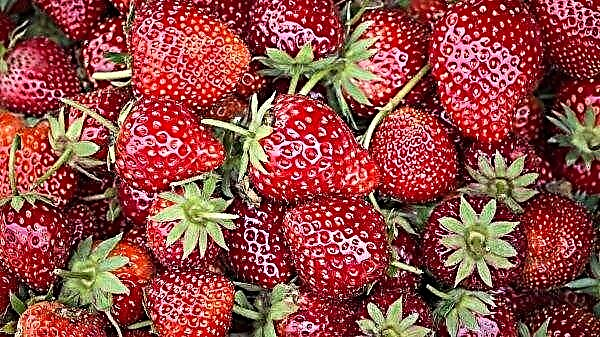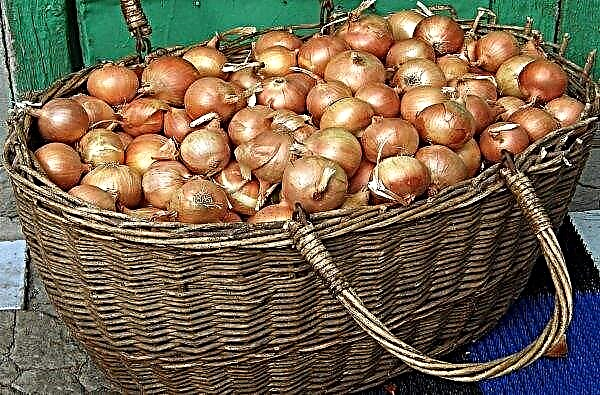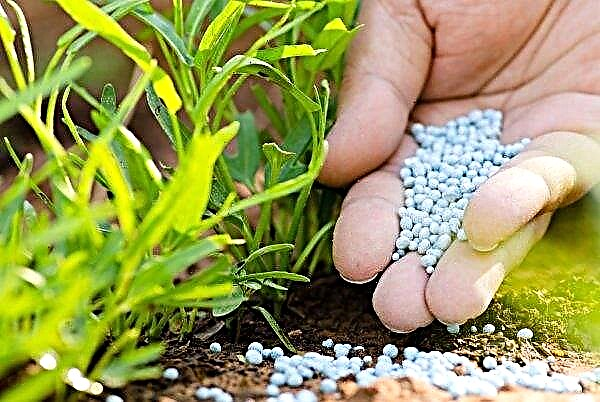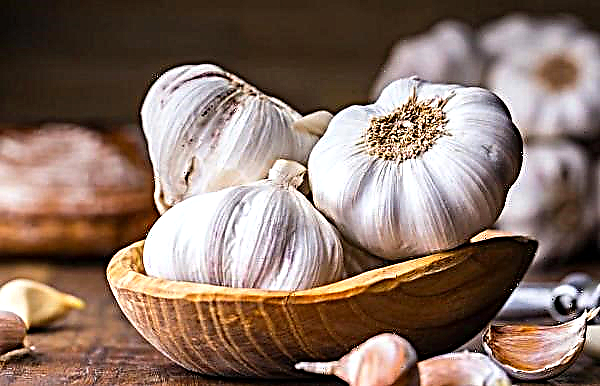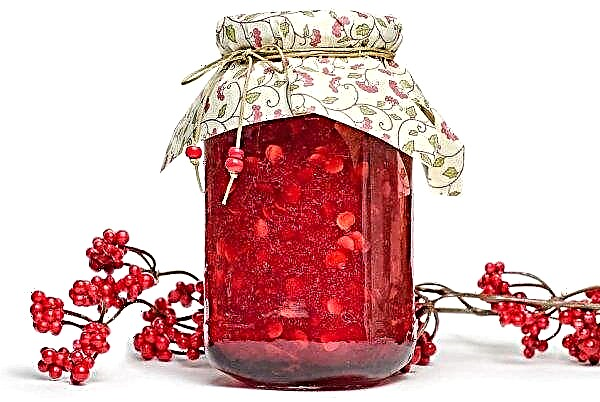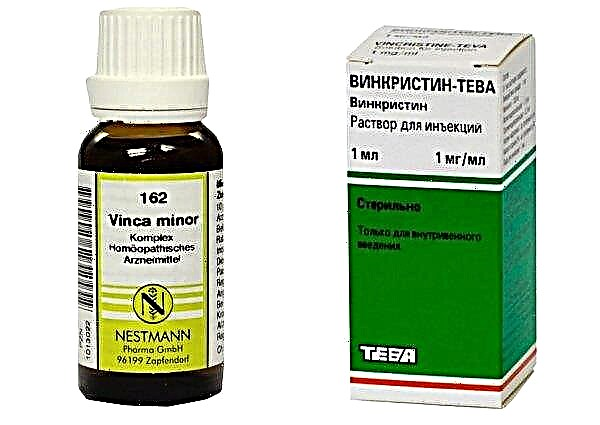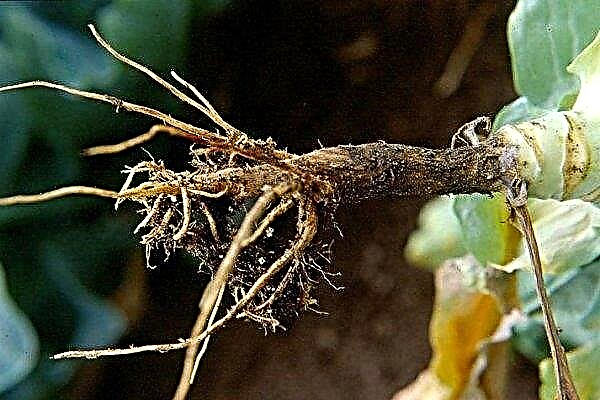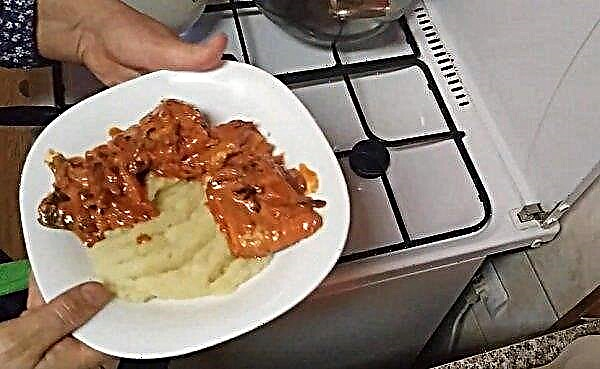Each gardener and gardener sooner or later thinks about independent cultivation of seed material in order to save the variety they like or save money. With proper observance of the technology and characteristics of the root crop, this is not at all difficult to do. Consider how to get full-fledged carrot seeds in your summer cottage or garden.
Where do carrot seeds come from?
It will not be possible to see where the seeds are and collect them in the first year of the growing season. Carrots are a two-year-old plant and produce peduncles on last year’s root crops. A complex inflorescence in the form of an umbrella blooms in June-July and gives about 2 thousand seeds each.

Planting and caring for seeds at home
You need to think about how to get high-quality seeds before the first sowing of the crop on the tuber. Not every liked variety is able to give offspring with the preservation of all varietal characters. F1 hybrids for this reason should not be used for breeding.
Did you know? Initially, carrots were grown as a spice to produce fragrant leaves and seeds, and not for root crops.
As planting material, not one, but several root crops are selected from the crop to ensure better pollination. The most selected and high-quality carrots, without signs of disease and not damaged by rodents, are put into boxes for winter storage and sprinkled with sand so that they do not touch.

Leaves are trimmed carefully so as not to damage the apical bud. Boxes are stored in cellars and cellars at a temperature of +1 ... + 2 ° C. Carrots for planting can also be selected in the spring after wintering, in order to maintain high rates of keeping quality.
When and how to plant carrots on seeds
The designated beds are prepared in advance. In the autumn they dig and fertilize with compost or humus. In the spring make mineral fertilizing or ash. In order to grow carrots for seeds, plant root crops in soil warmed up to +10 ... + 15 ° C in the complete absence of the threat of frost.
Important! Seed carrots on the site should grow only one variety, away from other umbrella crops and especially wild carrots, to prevent pollination.
In areas with a cold climate, germination can begin in advance according to the principle of seedlings in pots, then after the establishment of warm weather, transfer to the garden along with an earthen lump. For too large specimens for planting, you can use only the upper third with a growth point, cut off the rest and use for cooking.
2 days before planting, carrots are disinfected in a pale pink solution of potassium permanganate. Prepared root crops are planted in groups of 3-4. or in rows according to the pattern of 30 x 60 cm. The level of penetration should be such that after irrigation only young leaves with a bud are visible on the surface of the earth.

Care for growing carrots for seeds
As the tops grow, caring for plants includes the usual techniques:
- timely watering;
- weed weeding;
- loosening the soil;
- mulching;
- spraying with drugs from diseases and pests;
- top dressing before budding with nitrogen fertilizers, with the appearance of a peduncle - potash if the soil is infertile or not fertilized before planting.
To obtain higher quality seed material, experienced gardeners recommend irrigating the bushes with lime milk instead of top dressing two weeks after planting on the beds.
Important! All lateral shoots should be cut so that they do not take away the power from the main peduncle.
Around mid-summer, carrots bloom. If the umbrellas of the plant are very high, and the inflorescences are heavy, they need to provide support by tying them to supports.
Step-by-step instruction for collecting seed
Inflorescences of carrots ripen unevenly, so they will have to be harvested selectively in several passes. But if more than half of the umbrellas are ready for harvesting on the bush, the peduncles are cut off completely.
Collection time
Throughout August, floral umbrellas gradually darken, acquiring a brown hue, and curl up with flowers inward. Without waiting for complete drying, they are cut off with a part of the stem about 20 cm long. The root crops themselves, after flowering, are unsuitable for food.

Preparing a plant for collecting seeds
The collected inflorescences are bundled in bunches of several pieces and hung in a dry place for ripening. To protect against the loss of grains during drying, make gauze bags and put on the heads of inflorescences.
Seed Appearance
Well-ripened seeds have a brown color and a slight sheen. Small and weightless, they freely fall out of inflorescences after complete drying. Rigid villi located along the grains easily catch any garbage.
Did you know? If you consume fresh carrots in excess of 250 for a long time–300 g, the skin will for a long time acquire a steady orange hue.
Collection process
Before collecting seeds from inflorescences, it is advisable to wear leather or rubber gloves so as not to get injured by sharp villi. Further, the inflorescences are rubbed in the hands, while dry grains easily spill out. The most healthy, strong and with high germination ability are obtained from the outer edge of the corolla, so the inner core does not need to be knocked out.

Selection of suitable and unsuitable seeds
Sorting of the obtained seed material at home is carried out in one of the following ways:
- The seeds cleaned from garbage are poured, stirring, in a solution of 30 g of salt per liter of water and allowed to settle for 10-15 minutes. Well-ripened, full-bodied grains will fall to the bottom, and unripe and empty will remain on the surface. They are drained, and the rest are washed in clean water and spread for drying on fabric or paper.
- Dry sorting consists in placing the seeds on a flat surface and several times passing them over with an electrified plastic handle or an ebonite stick. Empty seeds will stick to it like metal shavings to a magnet. The height is selected experimentally, and it is usually 1-2 cm.
- Cleaning from debris and low-quality seeds can be done by screening in the wind or under a stream of air from the fan.
Features of storage of collected seeds
The best conditions for storage are places without sharp fluctuations in temperature and humidity. For this, ordinary living quarters are suitable. Seed material is packaged in paper bags and signed grade and year of collection.
If the entire quantity has not been used for sowing and will be stored for a second year and beyond, the seeds should be transferred to a glass container with a tight-fitting lid to protect it from drying out. Carrots retain viability for only 2-3 years, so it is useless to harvest many seeds at once. The best option is to grow a fresh batch annually.

In addition, any variety gradually loses its quality and degenerates, so it is advisable to periodically sow seeds from verified manufacturers. Growing your own seeds is not only economically viable, but also interesting and exciting, and a variety accustomed to local growing conditions will give an even better crop.

